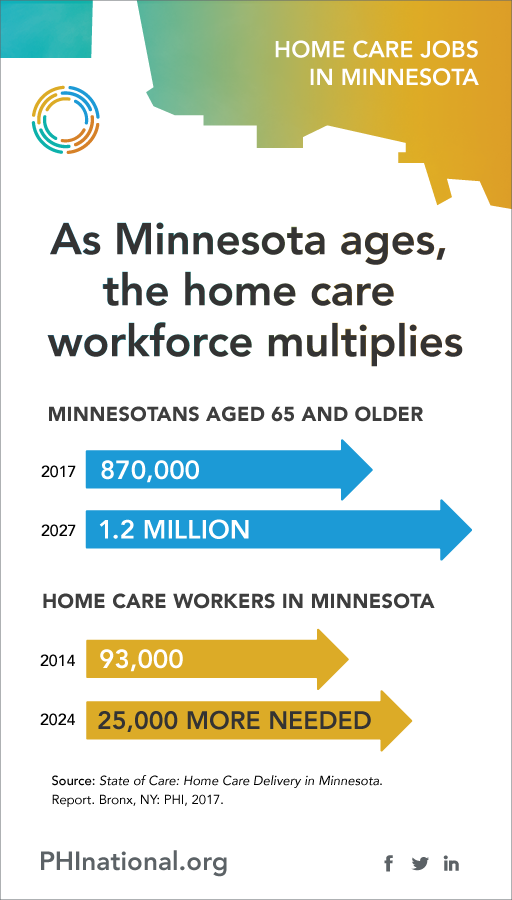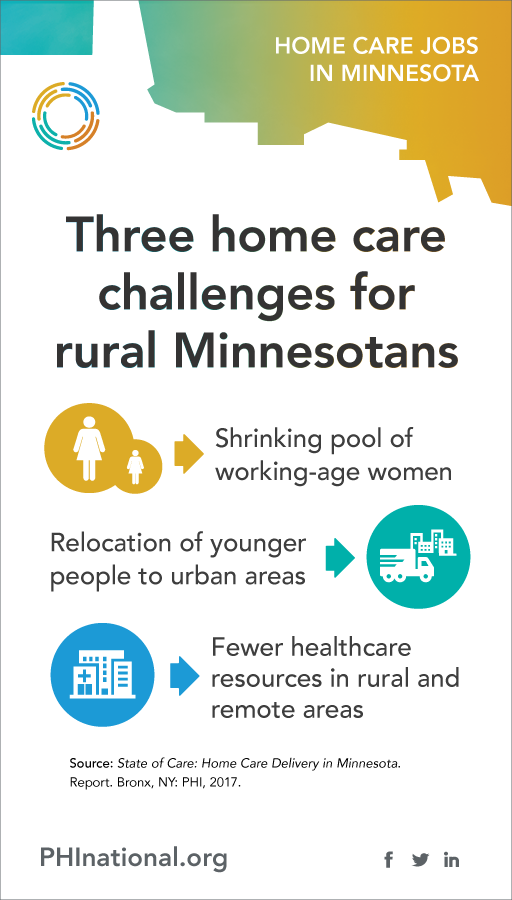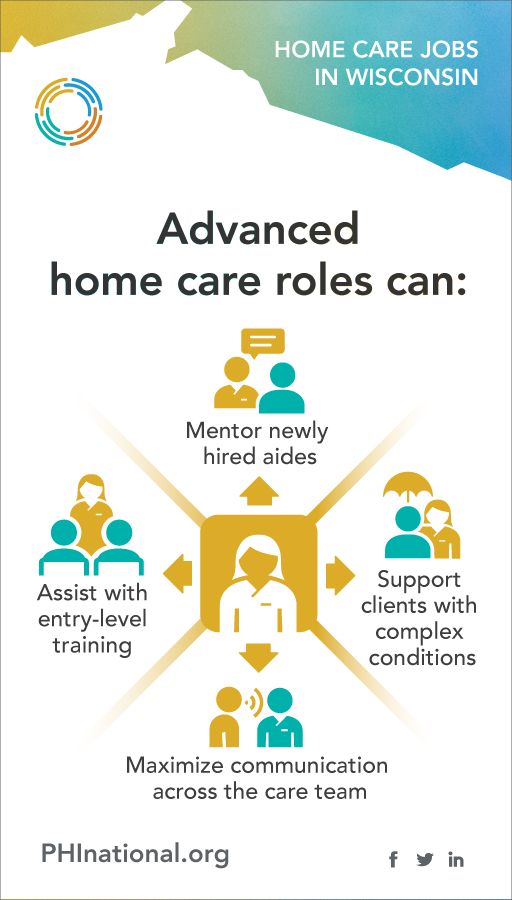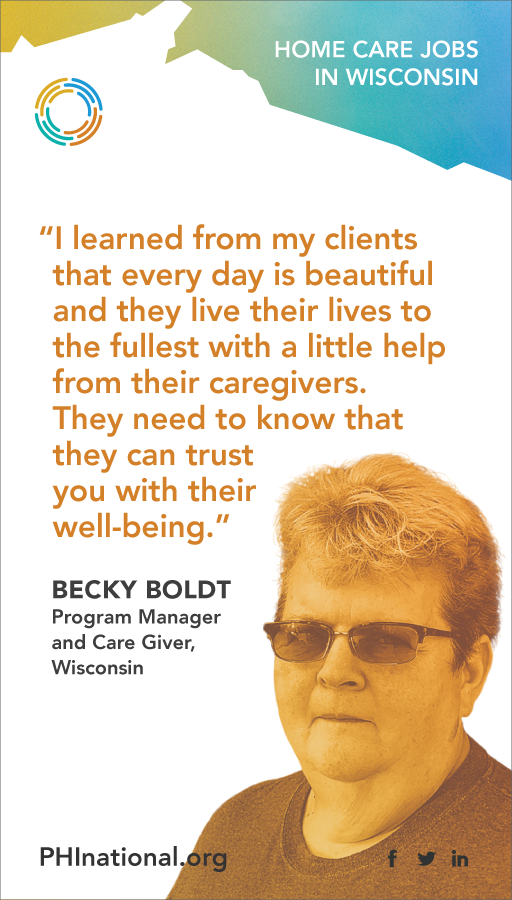Savvy Social Media: 6 Lessons from Minnesota and Wisconsin
With its vast reach and widespread use, social media has the potential to transform how home care workers are valued in today’s world. As in many other industries, leaders in long-term care are increasingly tapping the power of social media to educate and engage their online audiences, compelling them to act on a variety of issues.
In 2018, PHI launched social media campaigns in Minnesota and Wisconsin to raise awareness of the challenges facing the home care sector, especially in rural areas, and to spread the word about our multi-year initiatives focused on the home care workforce in those states.
Over the course of four weeks, each campaign educated and engaged users in Minnesota and Wisconsin about recruitment, retention, and other challenges in the home care sector. Our local partners helped promote the campaign and compiled an assortment of stories from home care workers. By the end of the campaign, the two efforts had reached more than 47,000 people and generated approximately 191,000 impressions.
How did we do it, and what did we learn? Here are six lessons from these campaigns.
Visualize (and animate) the problem
A properly explained problem connects the dots for a reader, showing them clearly how one dynamic creates another. In the GIF we created, which can be seen here, we delineate the three most important statistics explaining wages and turnover. By keeping the message clear and sequential, we allow the data to speak for itself, and the primary points to shine. Consider creating GIFs to animate your message, since they convey personality, enhance storytelling and step-by-step argumentation, and perform better than many other types of social media content.
Quantify the problem ahead
Strong arguments are driven by good data—statistical evidence that moves a reader from anecdotal understanding to the empirical “truth.” However, effective data presentation needs a comparison point, and one of the best comparisons is between now and the future—between what we’re living through and what lies ahead. In this campaign, we used 10-year projections to vividly illustrate how the rapid growth in older people over the next decade will require a significant increase in home care workers. How could a policymaker ignore this stark and revealing comparison?

Make clear and logical arguments
In Minnesota and Wisconsin, the challenge of finding home care workers is compounded by the difficult realities of rural living. When positing an argument, it’s important to spell out the distinct challenges—clearly and logically—and not overwhelm readers with too much information. In this meme, we zero in on three challenges for rural residents: fewer and fewer working-age women to fill these jobs, the trend of younger people (who might otherwise provide family support) moving to urban areas, and the fact that there are fewer health-related resources in rural regions of the state, especially in remote areas. Keep your explanation simple—your audience should be able to easily recite it.

Move from problems to solutions
In each of our month-long social media campaigns, the first two weeks focused on explaining the problem: high turnover among home care workers leave many clients without support, a trend that will worsen in the years ahead, especially in rural areas. However, readers also crave solutions. In this meme, we present the concept of advanced roles, showing how one solution might be to create career development opportunities that improve job satisfaction, reduce turnover, and enhance care. Problem solved?

Then move from solutions to actions
Not quite. Once readers are convinced the problem has a solution, they also need a way to act. Our campaigns in Minnesota and Wisconsin are part of a multi-year initiative to improve training, advancement opportunities, recruitment and retention strategies, and much more. Because social media posts should direct people to additional online content, the image below pointed readers to an overview of our initiative in Wisconsin, which spells out a range of practical strategies. Without opportunities for action, a public education campaign can leave a reader frustrated at best and defeated at worst.

Let workers inform and inspire
Finally, an effective education campaign must properly capture the human experience, showing how everyday people are affected by the issues at hand. For this campaign, we worked with our initiative partners on the ground in Minnesota and Wisconsin to collect stories from home care workers, in which they describe their experiences and voice their hard-earned opinions about what changes are needed in their states. Their stories—and accompanying photographs—brought emotion and veracity to our arguments, resulting in the highest engagement figures of the entire campaign.






